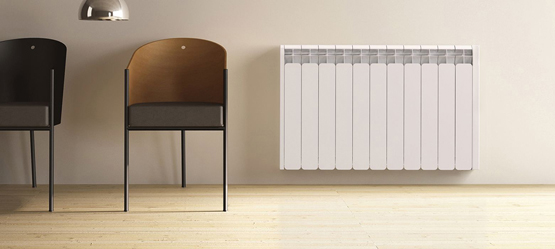Alumina, commonly known as "oxygen", is a white amorphous powder, commonly known as corundum.
Alumina is a white solid insoluble in water. Odorless. Tasteless. The quality is extremely hard. Easy to absorb moisture, not deliquescence.
Amphoteric oxide
Material, soluble
Inorganic acid and alkali solutions, almost insoluble in water and nonpolar
Organic solvents. Relative
Density (D204) 4.0.
The melting point is about 2000 C. Because of the different principles of corrosive materials, the oxidation ability of aluminium radiator corrodes, but it is prone to alkali corrosion and chloride ion corrosion. Thus, when the water heating system is alkaline (PH value is higher than 7), or the chloride ion content is high (salt content), the radiator has the risk of corrosion leakage. At the same time, it also reminds consumers that aluminum alloy is more active than other commonly used metals and is prone to electrochemical corrosion. It is necessary to avoid mixing with other materials and installing aluminum radiators. Only a few days after the aluminium automobile radiator was put into use, perforation and leakage occurred. After inspection, it was found that the inner surface of the tube with more uniform corrosion points was distributed in the radiator. The pitting morphology belongs to. The chemical analysis of the coolant found that the high concentration of chloride ion and the content of chloride ion even reached 187 mg/L. The leakage of the pitting perforated aluminium radiator was due to the damage caused by the material of passivation film on the surface of aluminium chloride ion; the cooling environment medium was an important chloride ion source which caused the environmental medium analysis heat dissipation. There are many reasons for leaking steel and thermite in the process of using perforation and leakage, which can be divided into two aspects: first, the treatment of welding wiring quality of radiator, and the poor operation and management of the second radiator heating system. So-called corrosion, the surrounding environment of the material, and lead to component reaction, deterioration when system failure occurs
And call it corrosion failure. It can be seen that corrosion damage of any material or component can be divided into internal causes (physical and chemical properties of the material or component itself) and external causes (working conditions of members). Light radiator has developed rapidly at home and abroad with its unique advantages. In China, due to product quality, heating and operation management, as well as many other reasons, the corrosion problem in practical application has become a key obstacle to the development of light radiators. To this end, from their own products, system operation and management, anti-corrosion coatings and other ways of quality, efforts to solve the problem, and achieved some results. As a part of the corrosion of radiators made of various materials in the business environment of manufacturers and users, the reasons are not understood, so disputes have been in use, and any adverse effects of radiator industry.



